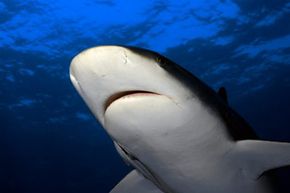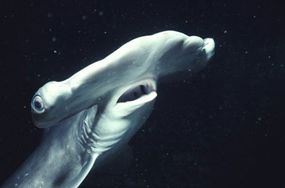Quck answer
Sharks are fascinating creatures that have been around for millions of years. They are known for their sharp teeth, powerful jaws, and streamlined bodies that allow them to swim quickly through the water. Sharks have a unique set of senses that help them to locate prey, including electroreception, which allows them to detect electrical fields, and a keen sense of smell. They also have a specialized organ called the lateral line, which allows them to sense vibrations in the water. Despite their fearsome reputation, sharks play an important role in the ocean ecosystem and are not typically a threat to humans.
Wild Animals
The Senses of Sharks

Sharks are known for their exceptional senses, which contribute to their skills as hunters. At first, scientists believed that sharks primarily relied on their sense of smell for hunting. However, subsequent research has shown that these sea creatures depend on all of their senses for success in hunting. When one of their senses is removed, it significantly hinders their ability to hunt.
Their sense of smell is one of their most impressive features. It is located in the two forward-facing nostrils on the shark’s snout. These nostrils are like the two ears of a human, allowing the shark to detect the direction of the smell. Some sharks can detect blood and odors from miles away. For instance, a great white shark can detect a single drop of blood in a swimming pool.
Sharks also have a strong sense of hearing, allowing them to track sounds from wounded prey over long distances. Their eyesight varies depending on the species. Sharks that stay near the water surface do not have particularly acute eyesight, while the ones that stay at the bottom of the ocean have very large eyes that enable them to see in near darkness. Most sharks have a broad field of view, as their eyes are positioned on each side of their head. The hammerhead shark, for example, has eyes that protrude from its head.
Sharks also utilize their sense of taste before consuming their prey. They bite it first and then use the sensitive taste buds in their mouth to analyze it. If the prey does not align with their usual diet, they will reject it.
Sharks have other senses that are not yet fully understood.

The hammerhead shark has a distinctive head structure where the eyes and nostrils are located at the ends of the protrusions.
The shark’s ability to detect electric fields is made possible by the ampullae of Lorenzini. These sensory organs are comprised of small clusters of electrically-sensitive receptor cells that are situated beneath the shark’s skin in its head. The receptor cells are connected to pores on the skin’s surface via small jelly-filled tubes. The sharks are able to “see” the weak electrical fields that are generated by living organisms thanks to these sensors. Although scientists do not fully understand these organs, they have discovered that the shark’s electrosense is limited to a few feet in front of its nose, which is sufficient for it to locate fish and other prey hiding on the ocean floor.
The shark’s lateral line is another unique sense organ. It is a set of tubes just under the shark’s skin. The two main tubes run on both sides of the shark’s body from its head to its tail. Pores on the skin’s surface allow water to flow into these tubes, which are lined with hair-like protrusions that are connected to sensory cells. When something approaches the shark, the water running through the lateral line moves back and forth, stimulating the sensory cells and alerting the shark to any potential prey or predator in the area.
None of the shark’s sense organs would be effective for hunting alone. However, the combination of all these senses makes the shark an unparalleled predator. The success of sharks in finding food is due largely to these physiological advancements, and they are also excellent at catching food, as we will see in the next section.
FAQ
1. What are sharks?
Sharks are a type of fish that have a cartilaginous skeleton, five to seven gill slits on the sides of their heads, and several rows of teeth. They come in different sizes and shapes, from the tiny pygmy shark to the massive whale shark.
2. How do sharks breathe?
Sharks use gills to breathe. Water enters through their mouths and passes over their gills, where oxygen is extracted and carbon dioxide is released. Some sharks, like the great white, must swim constantly to breathe, while others can pump water over their gills while stationary.
3. What do sharks eat?
Sharks are carnivores and eat a variety of prey, including fish, squid, crustaceans, and marine mammals. Some sharks, like the whale shark, are filter feeders and eat plankton.
4. How do sharks hunt?
Sharks use their keen senses, such as smell and electroreception, to locate prey. They then use their speed and agility to catch and kill their prey, often using their sharp teeth to tear off chunks of flesh.
5. How long do sharks live?
The lifespan of a shark varies depending on the species. Some, like the spiny dogfish, can live up to 100 years, while others, like the shortfin mako, only live for about 20 years.
6. Why are sharks important to the ocean ecosystem?
Sharks play an important role in the ocean ecosystem as apex predators. They help regulate the populations of other marine animals and keep the balance of the food chain in check.
7. Can sharks see in color?
Most sharks are color blind and can only see shades of gray. However, some species, like the hammerhead, have a limited ability to see colors.
8. How do sharks reproduce?
Sharks reproduce through internal fertilization. The male inserts his claspers into the female’s cloaca, where he releases his sperm. The female then fertilizes her eggs internally and gives birth to live young or lays eggs, depending on the species.
9. Are sharks endangered?
Many shark species are endangered due to overfishing, habitat loss, and climate change. It is important to protect these animals and their habitats to ensure their survival.
10. What is the biggest shark in the world?
The biggest shark in the world is the whale shark, which can grow up to 40 feet in length and weigh up to 20 tons.
11. Are sharks dangerous to humans?
While sharks are often portrayed as dangerous predators, they rarely attack humans. Most shark attacks are a case of mistaken identity, where the shark mistakes a human for its usual prey. It is important to respect these animals and take precautions when swimming in their habitats.





Leave a Reply